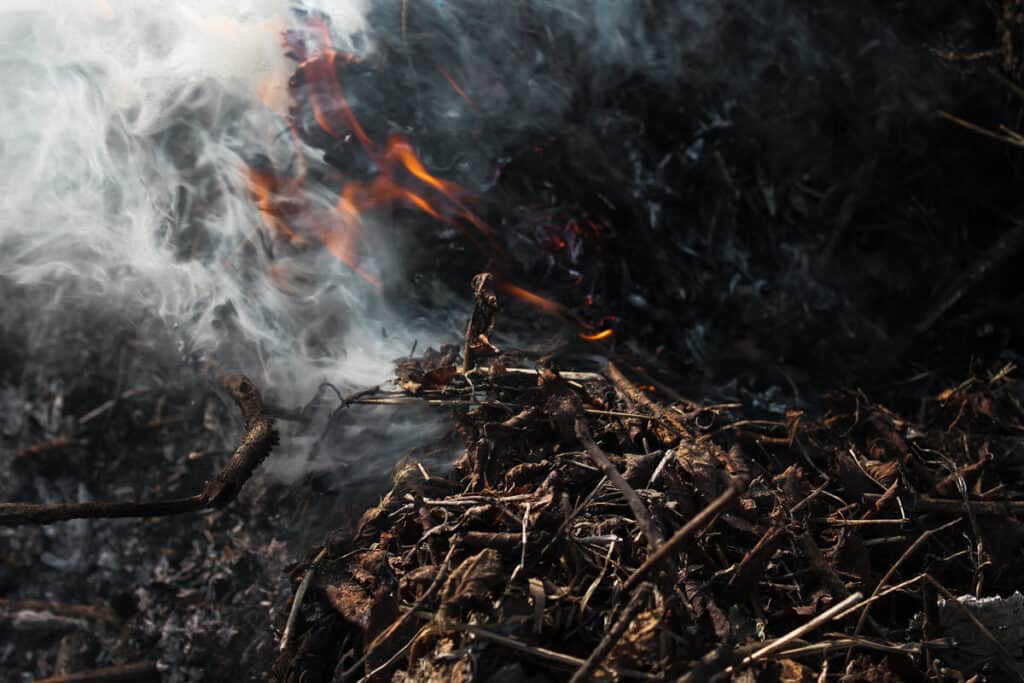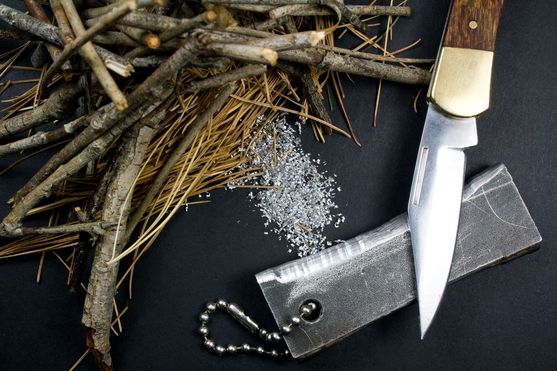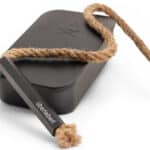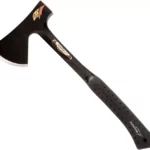A fire piston, also known as a fire syringe or slam rod fire starter, is an ancient tool from Southeast Asia that ignites fire through rapid air compression.
Key Takeaways
- Fundamentals of Fire Pistons: A fire piston is an ancient tool for starting fires. It consists of a hollow cylinder and a piston, which create an airtight seal. The method relies on rapid air compression to ignite tinder.
- Science Behind the Spark: The fire piston operates on the principle of adiabatic heating. Rapid air compression increases its temperature to the point of igniting the tinder. This is a practical application of thermodynamics.
- Global History: Originating in Southeast Asia, the fire piston has been used for centuries and has spread across continents. It was a popular household tool in Europe during the 18th century.
- Choosing the Right Fire Piston: When selecting a fire piston, look for features like an airtight seal, a sturdy handle, and a well-designed cylinder. Some models even come with spare parts like rubber O-rings and char cloth.
Table of Contents
What Is A Fire Piston?
A fire piston is a simple device used to start a fire without matches or a lighter. It consists of a hollow cylinder and a piston that creates an airtight seal when inserted into the cylinder. This centuries-old method works by compressing the air inside the fire piston until it reaches a temperature high enough to ignite the tinder placed inside.
Compressing air naturally increases its temperature; unlike expanding air, which cools, compressed air heats up. So, if you compress air quickly enough, the temperature will increase dramatically, causing any tinder materials (such as char cloth) placed inside the chamber of the fire piston to catch fire.
This method of starting fire has been used around the world for centuries. Southeast Asian fire pistons are known to date back at least two thousand years. The use of the “slam rod” spread from there to across Africa and eventually made its way to Europe (though they may have been independently derived from air guns there), where it became a popular household tool in the 18th century.
How Does A Fire Piston Work?
A fire piston operates on the principle of adiabatic heating, where the air is rapidly compressed, increasing its temperature to the ignition point of tinder placed in the piston. The process involves these steps:
- Tinder is placed in a small compartment at one end of the piston.
- The piston is quickly inserted into the cylinder, creating airtight compression.
- The rapid compression heats the air inside, reaching a temperature that can ignite the tinder.
- Once the piston is quickly removed, the glowing ember of the tinder can be used to start a fire.
This primitive fire-starting method is a practical illustration of the principles of thermodynamics.
The action of fire pistons naturally compresses the air inside into a smaller and smaller space. Because the heat already in the air is concentrated into a smaller volume much faster than it dissipates, the interior temperature of the cylinder will rise sharply as the air in it gets compressed.
Rapid compression of air by a factor of 25 to 1, which occurs inside most types of fire pistons, concentrates energy sufficiently to raise the temperature of the air within the piston tube to 800 degrees Fahrenheit. This is easily hot enough to ignite the bit of tinder or char cloth that’s been placed inside the fire piston cylinder.
Understanding the Physics Behind Fire Pistons
The fire piston operates on a simple but profound scientific principle: the rapid compression of air generates heat. When you push the piston into its cylinder, the air inside is compressed to a fraction of its original volume in a fraction of a second. This rapid compression increases the air’s temperature to the point where it can ignite a small piece of tinder placed at the end of the piston.
This phenomenon is a practical application of the ideal gas law, which states that a gas’s pressure, volume, and temperature are interrelated. In the case of the fire piston, when the volume is decreased rapidly by pushing the piston into the cylinder, the temperature spikes dramatically due to the pressure increase, leading to ignition.
To fully appreciate the ingenuity of the fire piston, it helps to visualize the process. Imagine pressing a syringe quickly with the tip blocked; the air inside heats up. The fire piston works similarly, but the design ensures that the heat is concentrated at the tip where the tinder is located, achieving ignition.
This basic principle of physics not only provides us with a reliable way to start fires without modern conveniences but also connects us to historical methods of survival and ingenuity. The fire piston reminds us of the fundamental science that governs much of our daily lives and the innovative ways our ancestors applied these principles long before the advent of modern technology.
Here’s a video that explains the scientific principles behind how a fire piston works:
How To Choose The Best Fire Piston
A fire piston is a fairly simple-looking tool. However, a fire piston has to be constructed and assembled in just the right way or it may not work… just when you need it the most.
Here are some important features to look for when choosing the best fire piston:
- The cylinder needs to be sealed or closed-ended on one side and open at the other.
- The piston needs to create an airtight seal as it is inserted into the cylinder. This is usually accomplished by using a rubber O-ring to create a completely airtight seal when the time comes to thrust the piston into the cylinder to ignite.
- Make sure the piston has a solid handle that won’t snap or break under use. If you’re going to be pushing hard on it you don’t want a flimsy piston that could break or a surface that could harm your hand.
- It also works best if the hollow cylinder has a small indentation or crevasse inside that provides a good space to hold the tinder of choice. It’s also nice to include spare parts, such as a replacement rubber O-ring. A sample of some char cloth is good to have so you can try it out right away.
- ✔️ An amazing survival fire starting kit that causes instantaneous combustions using air energy change of physics experiments to high-school kids
- ✔️It will be a back up kit, it should be work with Char Cloth and you can show it to others to tell the fire principle and skills understand the theory, so COOL, but if you think a lighter or flint can work better you should not buy this one.
- ✔️Compression Ignition is not so easy for all market fire piston, but ours is at the top level of possibility, we use 2 Dual Orings on the plunger for Added Compression
- ✔️A classical, fine survival fire starter, it can be a good camping fire starter kit too.
- ✔️Safety warning:kids should be under adult supervision to avoid injury.
- Compression ignition – The piston ignites the char cloth through compressed air, the same principle as the diesel engine
- Durable Design–With piston head made of copper and chamber is made of aluminum, this fire piston is built to last
- Efficient – If you know how to load carbon cloth properly, this fire piston will work on every strike
- COMPACT SIZE – The kit comes packaged in a tin box that you can easily slip into your backpack or toolbox, ideal for camping or backpacking
- Beginner friendly – Kit comes with all the parts and accessories needed to start a fire and detailed instructions
- MADE IN THE U.S.A Primary or backup fire starting tool
- Great fire starting device that uses air
- MADE IN THE U.S.A
- YOU will Receive Hickory Fire Piston,Bag of Char Cloth, (2) Orings,Instructions How to use the Fire Piston & Make Char Cloth
- Overall length is 4-1/2 (114.3mm) Diameter is 7/8 (22.2mm) Weight 2.0oz 56.7g
How to Use a Fire Piston Step-by-Step
Step 1: Load – Using fire pistons begins with the small bit of tinder that needs to be placed inside the cylinder. Good options for tinder include char cloth, dry leaves, birch tree bark, moss, or cotton balls.
Step 2: Assemble – insert the end of the piston into the open end of the cylinder. For many types, it’s important to lubricate the piston with a lubricant such as petroleum jelly.
Step 3: Slam – Find a hard surface to rest the other end of the cylinder on, make sure you have a firm grip on the handle, and quickly slam the piston the rest of the way into the cylinder. If everything has worked properly, your char cloth or other tinder should have been set alight — creating a smoldering mass that can be used to light a fire.
Here’s a video that shows you how to use a fire piston:

How to Turn Smoldering Tinder into a Fire
Once you’ve lit the tinder in your fire piston, it’s important to keep the spark going. Transfer the now-burning tinder to a pre-prepared pile of kindling material, such as small sticks, fatwood shavings, a large clump of moss, dried-out pine needles, or even cotton ball fire starters.
Once the kindling has caught flame and is burning well, you can transfer it from the fire piston to where you’ve set up larger pieces of wood. This must be done quickly, as the now-burning tinder depletes the oxygen inside the fire piston.
Make sure these initial pieces are burning before gradually adding larger kindling, followed by larger pieces of wood or logs, until the fire is the right size for your purposes.
However, if you are using wet wood to build your fire, be sure to read our how to start a fire with wet wood article.
Why Fire Pistons are Still Useful
Even though the popularity of fire pistons for use in daily life has diminished since the invention of the safety match, they are still a useful tool for survival situations. The fire piston’s big advantage over matches is that it still works dependably, even after getting wet. As long as the cylinder is dried out before use, there’s no problem if your fire piston gets soaked before a fire starts.
A fire piston is a great addition to a survival kit. It can be used as a backup in case your matches get soaked or as a standalone fire starter due to its efficiency and dependability. This is a great way to start a fire in a wide variety of situations and weather conditions.
Tip: For the ultimate in all-weather fire-starting gear… check out our list of the best Ferro Rod
FAQs about Fire Pistons
What is a Fire Piston?
A fire piston is a device used to ignite kindling by rapidly compressing air. This ancient tool, consisting of a hollow cylinder sealed at one end and a piston that fits tightly within, works on the principle of adiabatic heating. When the piston is quickly pushed into the cylinder, the air inside is compressed, raising its temperature to a point sufficient to ignite a small piece of tinder placed at the end of the piston. Fire pistons are known for their efficiency and have been used by various cultures around the world for fire starting.
How does a Fire Piston work?
The Fire Piston operates on the principle of adiabatic heating. When the piston is quickly inserted into the cylinder, it creates airtight compression. This rapid compression heats the air inside, reaching a temperature that can ignite the tinder. Once the piston is quickly removed, the glowing ember of the tinder can be used to start a fire.
What are the key features to look for when choosing a Fire Piston?
When choosing a Fire Piston, it’s important to look for a cylinder that is sealed or closed-ended on one side and open on the other. The piston should create an airtight seal as it is inserted into the cylinder, usually accomplished by using a rubber O-ring. It’s also beneficial if the piston has a solid handle that won’t break under use.
How to use a Fire Piston?
Using a Fire Piston involves loading it with tinder, lubricating the piston, inserting it into the cylinder, and slamming it quickly to create heat and ignite the tinder material. Once lit, the tinder can be transferred to kindling and then larger wood pieces to build a fire.
Why are Fire Pistons still useful?
Fire Pistons are still useful for survival situations because they work even when wet and can be a dependable backup to matches. As part of a survival kit, a fire piston is a great way to ensure you can start a fire in any situation.
Can Fire Pistons Be Educational?
Absolutely! Fire Pistons serve as an educational tool to demonstrate principles of physics and thermodynamics. They offer a hands-on experience to understand how rapid air compression can lead to ignition, making it not just a survival tool but also an educational device.
Are There Any Tips or Tricks for Using Fire Pistons?
Yes, lubricating the piston with a substance like petroleum jelly can enhance the airtight seal. Also, choosing the right kind of tinder and ensuring the cylinder is dry are crucial steps for successful ignition.
- ✔️ An amazing survival fire starting kit that causes instantaneous combustions using air energy change of physics experiments to high-school kids
- ✔️It will be a back up kit, it should be work with Char Cloth and you can show it to others to tell the fire principle and skills understand the theory, so COOL, but if you think a lighter or flint can work better you should not buy this one.
- ✔️Compression Ignition is not so easy for all market fire piston, but ours is at the top level of possibility, we use 2 Dual Orings on the plunger for Added Compression
- ✔️A classical, fine survival fire starter, it can be a good camping fire starter kit too.
- ✔️Safety warning:kids should be under adult supervision to avoid injury.
- Compression ignition – The piston ignites the char cloth through compressed air, the same principle as the diesel engine
- Durable Design–With piston head made of copper and chamber is made of aluminum, this fire piston is built to last
- Efficient – If you know how to load carbon cloth properly, this fire piston will work on every strike
- COMPACT SIZE – The kit comes packaged in a tin box that you can easily slip into your backpack or toolbox, ideal for camping or backpacking
- Beginner friendly – Kit comes with all the parts and accessories needed to start a fire and detailed instructions
- MADE IN THE U.S.A Primary or backup fire starting tool
- Great fire starting device that uses air
- MADE IN THE U.S.A
- YOU will Receive Hickory Fire Piston,Bag of Char Cloth, (2) Orings,Instructions How to use the Fire Piston & Make Char Cloth
- Overall length is 4-1/2 (114.3mm) Diameter is 7/8 (22.2mm) Weight 2.0oz 56.7g















Leave a Reply